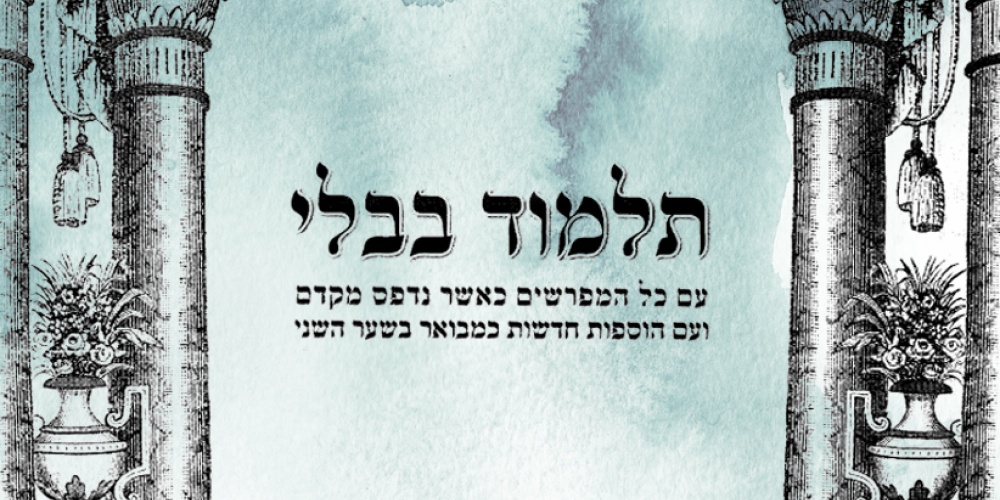
“Tanna devei Eliyahu, the school of Eliyahu, taught: Kol hashoneh, all who study (and review) halachot every day are guaranteed that they are destined for the World-to-Come, as it is stated: ‘His ways, halikhot, are eternal’ (Habakkuk 3:6). Do not read the verse as halikhot; rather, read it as halakhot” (Nidah 73a).
With no Tanna by the name of Eliyahu in Mishnaic literature, we must look elsewhere to discover who this “Tanna devei Eliyahu” might be. And we need not look too far.
“And it came to pass, as they still went on and talked that, behold, there appeared a chariot of fire, and horses of fire, and parted them both asunder; and Eliyahu went up by a whirlwind into heaven”. Apparently Eliyahu Hanavi did not “die” in the conventional sense; rather, he ascended to heaven but maintained a presence on earth. We thus find Eliyahu appearing before our Sages, reporting on goings-on beyond this earth and imparting teachings to us in this world.
“Eliyahu used to come to R. Anan, upon which occasions the prophet recited the Seder Eliyahu to him…Rav Anan made a box [to hide from his presence] and he sat before Eliyahu until he taught him all of his Seder” (Ketubot 106a). These teachings, the Tanna devei Eliyahu, were later compiled into a Midrashic work known as Seder deEliyahu Rabba, and Seder Eliyahu Zuta.
Eliyahu Hanavi is the bridge between this world and the next, between the past and the future. As we make havdalah on Saturday night, transitioning from me’ein olam haba, a foretaste of the World-to-Come, to the routine of this world, it is Eliyahu Hanavi whom we invoke in song. He is “present” at every brit milah, welcoming a newborn into the covenant. He is welcomed to the Pesach seder just at the point where we transition from discussing our redemption from Egypt to the redemption of the future. It is Eliyahu who, our tradition teaches, will announce the coming of the Mashiach.
So it should come as no surprise that it is Tanna devei Eliyahu who teaches how we can guarantee our place in the World-to-Come. It is the study, actually the daily review, of halacha, that is the pathway to heaven. As learning must lead to action, the daily review of halacha is a call to follow the dictates of Jewish law. An ignorant person cannot be a pious person. In order to observe the halacha day in and day out, we must study it day in and day out. It is Eliyahu who links those in this world to those in the next.
This is a beautiful teaching, so beautiful to the editors of the Gemara that they put this as the final words of the Talmud Bavli. For those who have been studying Daf Yomi (Mazal Tov!) for the past seven years, five months and three days, 2,711 double-sided pages, it is this teaching with which we conclude.
The Tosafists (Nidah 73a, s.v. Tanna) explain that the Talmud wants to “end with a good thing”, much like we always end the reading of the Haftarah on a positive note. This explanation is quite plausible, but needs some refining. We already have another teaching used by the Talmud to end masechtot Brachot, Yevamot, Nazir, Kritot and Tamid on a “good thing”. Namely, the teaching of Rabbi Elazar in the name of Rabbi Chanina that “Torah scholars increase peace in the world…. The Lord will give strength unto his people; the Lord will bless his people with peace[1]”. Why not end masechet Nidah the same way, linking the first and last masechtot of the Talmud with the blessing of Torah and peace? That G-d should grant us the blessing of peace is how we end our daily prayers, and it is how Rebbe Yehuda Hanassi ended the Mishna in masechet Uktzin. “Rabbi Shimon ben Halafta said: The Holy One, Blessed be He, found no vessel that could contain blessing for Israel save that of peace, as it is written: ‘The Lord will give strength unto his people; the Lord will bless his people with peace.’”
Why did Ravina and Rav Ashi substitute this “good teaching” of Tanna devei Eliyahu in place of the one they have used so many times before[2]?
There would seem to be a number of good reasons. “These are the things for which one enjoys the fruits in this world while the principal remains in the World-to-Come…And the study of the Torah is equal to them all” (Mishna Peah 1:1). Learning Torah (properly) takes much hard work and dedication. We must be ameliem beTorah, toil in Torah. It takes hours and hours and then some more hours. There are no shortcuts and there is no other way to become a Talmid Chacham. But if we do so, Eliyahu will be there to lead us to the World-to-Come. After completing the Talmud, we are entitled to look forward to the reward that awaits us.
At the same time, Ravina and Rav Ashi may want to direct our learning towards the proper goal. We learn first and foremost so we will know how to practice, lilmod al menat la’asot. The Gemara is full of long and winding debates, often with no conclusion. On any given question one can find many differing views, seemingly allowing one to pick and choose the view one likes best. And there is so much more than halacha that is contained in the Gemara. All this is necessary, beautiful and defines who we are as a people. But when all is said and done, when we learn, we must ensure that we know what the halacha is. Learning cannot remain purely theoretical, but must have a practical orientation.
Most importantly, we want to end with a teaching of “Eliyahu”. We may invite him to hear havdallah, come to the brit milah and join our Pesach seder, but most important is what it says in the Bible itself.
“And the Sages say: [Eliyahu will come]…to make peace in the world, for it is said, ‘Behold, I send to you Eliyahu the prophet before the coming of the great and awesome day of the Lord, and he shall turn the heart of the fathers to the children and the heart of the children to their fathers’” (Malachi 3:23-24).
As we arrive at the end of the Gemara, we hope and pray that our learning will lead to peace[3]. The ending of masechet Nidah is just the flip side of the ending of so many other masechtot.
“Harachaman, May the Merciful one send us Eliyahu the prophet, remembered for good, who shall proclaim to us, good tidings, salvations and consolations”. Amen!
[1] Interestingly, this teaching is also based on a play on words, that of banayich, our children, and bonayich, our builders, namely the teachers of Torah.
[2] This teaching does appear in one other place of the Talmud, in the middle of the fourth chapter of masechet Megillah (28b).
[3] Oftentimes, when the Talmud cannot resolve a monetary dispute and is unsure what to do with the money, it will instruct that, “It should be left until Eliyahu comes”. The Talmud is not telling us that Eliyahu will convene a court and rule on disputes going back hundreds and even thousands of years; rather, when we are ready to greet Eliyahu, we will discover the solution to our monetary disputes. It is amazing what can be solved in an atmosphere of peace.



